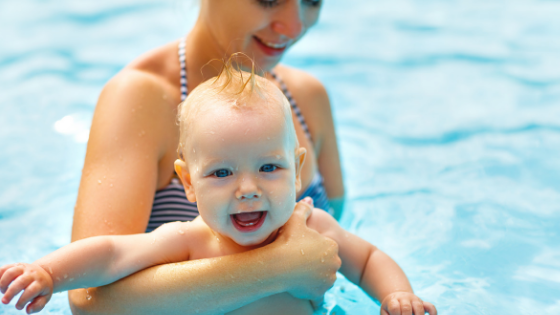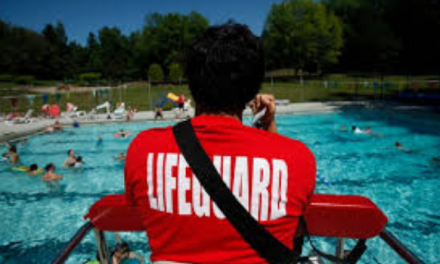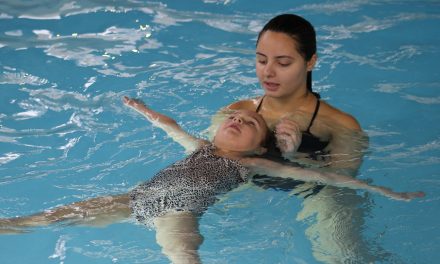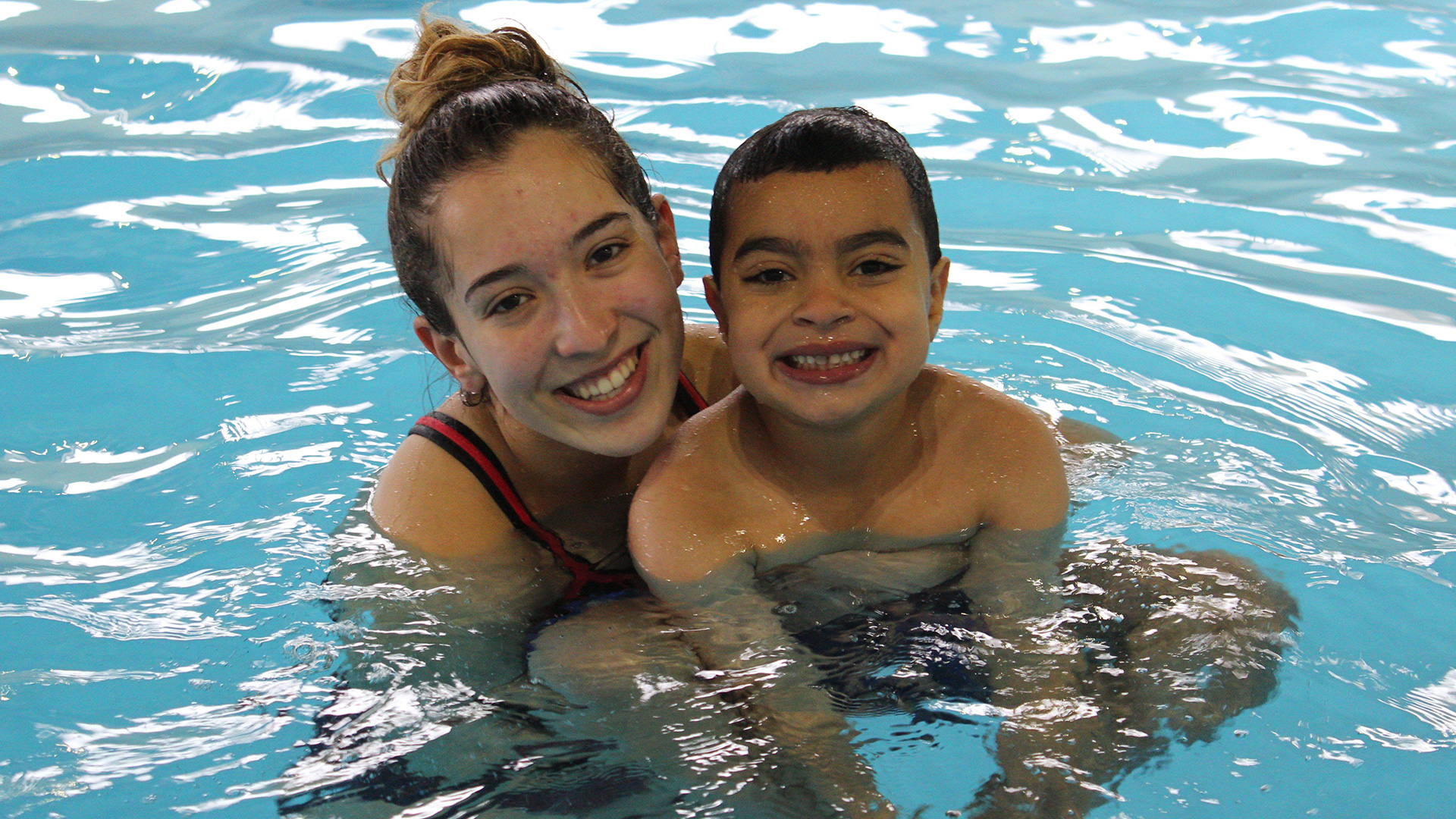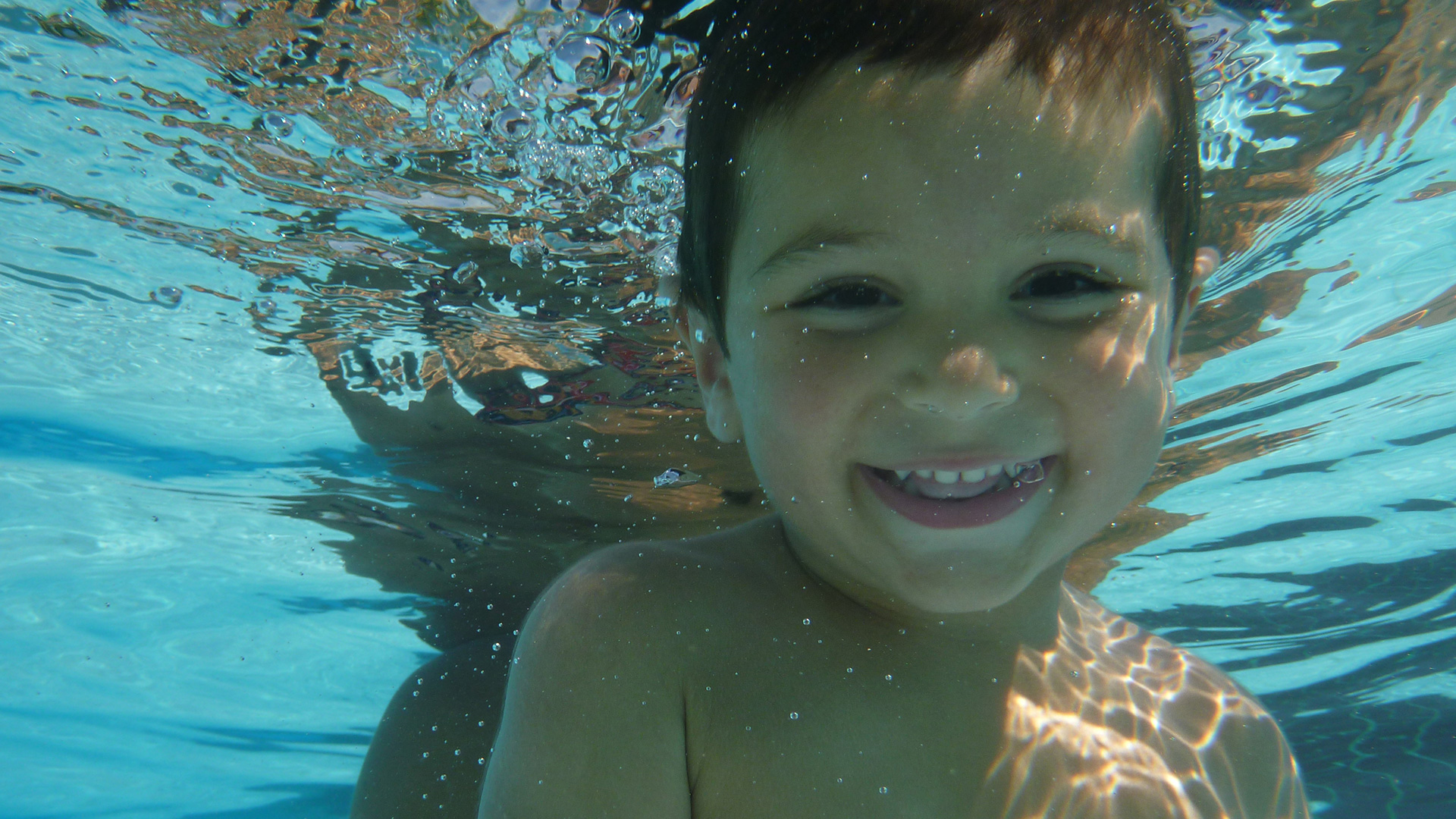In recent articles we’ve discussed how swimming is more than just a seasonal sport. And while the lifesaving applications extend primarily towards the summer and pool season, there are numerous other benefits to swimming year-round.
These include health benefits, from improved cardiovascular and muscular endurance to recuperative and recovery benefits due to swimming’s low impact on muscles and joints. There are also the mental benefits, the discipline and mental toughness required for endurance swimmers. Also worth mentioning is the liberating feeling of swimming, how floating and gliding is like flying, providing a sense of euphoria and wellness especially for new swimmers.
In today’s article we will explore an even grander perspective, from swimming year-round to swimming for life. Disclaimer here: while we say ‘for life’ we will actually focus on the years from newborn to young adult. What are the benefits of swimming as newborns grow into young adults, and how does this contribute to our personal development on a grander scale?
Survival 3-18 months
Babies and toddlers need to learn how to swim. In Canada, drowning remains the leading cause of preventable deaths for children 5 years and younger. Typical nay-sayers will argue that infants and newborns are too young to learn to swim. Incorrect. The exist many incredible programs and organizations that specialize in teaching infant survival swimming. Based on routine, repetition and conditioning even the youngest infant can be taught to flip on their back and save themselves after falling into water.
For babies, as of 3 months is the perfect age to start Parent & Tot classes. Many swim clubs offer this class or variations of this class, which provides a fun introduction to swimming and survival.
Learn to Swim 18-24 months
Around 18-24 months, toddler’s brains and social skills are sufficiently developed for them to start absorbing and applying technical skills and semi-complex movements, namely swimming techniques. In addition to basic survival skills like holding breath, toddlers can now be taught basic swim skills like floating, propulsion (kicking, paddling), and rolling over.
This age is ideal to start private 1on1 swim lessons, where qualified instructors can take advantage of the cognitive and physical readiness of the child, and start teaching them basic technical swimming skills.
Read more – Benefits of Swimming for Babies
Introduction to Technical Swimming 24 months – 6 years
As of 24 months, kids are in full “learn everything” and “do it myself” mode. It is the perfect time to advantage of teaching them new skills, and introducing them to new sports. While we will stick to swimming for this article, it is worth mentioning again that kids are a blank slate at this age, so the more new stuff you can throw at them, the better.
Private lessons continue to be the program while will have the most benefit, as a 1on1 coach can help swimmers develop the technical movements of the 4 strokes (front crawl, back crawl, breaststroke, and butterfly). Learning basic technical swimming is amazing for kids to learn complex coordination, between physical movements and breathing. Swimming at this age is an excellent compliment to other sports and activities.
Read more – Why Private Lessons are Best for Young Kids
Learn to Train 6 years – 15 years
Around 6-8 years old, children have developed the cognitive abilities and physical mastery to start the ‘learn to train’ phase. At this age, kids not only have the physical capacity to learn complicated technical movements, but also are mature enough to be in ‘coaching’ environment.
For swimmers who have followed the previous programs (Parent & Tot, Private Lessons), and who are still loving swimming and looking for the next challenge, a Swim Team offers exactly that. This group setting introduces swimmers to competitive swimming, with focus on long-distance endurance swimming, short-distance sprints, and everything in between. Competitive swimming is one of the best forms of athletic exercise, as it is a low-impact activity that is equally gruelling while targeting almost all the muscles in the body.
Become the Teacher – 15 years +
At 15 years old, a teenager who has grow up in the sport of swimming now has the opportunity to reverse roles and become the teacher. In Canada, anyone with basic swimming abilities can then take their Bronze Medallion, Bronze Cross and National Lifeguard certifications, which are the basic requirements to work at any pool in Canada. There are many additional certifications available, from Swim Instructor courses to Lifesaving Instructor courses and beyond.
Ready More – Why Swim Instructors are Better Prepared for Entrepreneurship
The cycle comes full circle
You are now a parent, and just had your first newborn. Congratulations are in order. The cycle has come full-circle, as your newborn will soon be ready for Parent & Tot classes.
As a new parent who grew up in swimming, I can attest to the fact that growing up in the swimming community is an incredible opportunity that has shaped my life. It has given me my best friends, my values, and my commitment to fitness.
If you are new to the swimming community, welcome to the Swimming Family for Life.


